Today moving around is easy. At the same time, we deal with traffic and delays, our availability of automobiles, aeroplanes, transit, and trains. Combined with well-paved roads, GPS, maps, gas stations, rest areas, travel for us in the 21st Century is a breeze. But some two centuries earlier, life in Ontario, then Upper Canada, was far more challenging. Many who lived in the settlements well outside the few urban centres never strayed too far from home. Local roads were often blazed trails from Indigenous people who lived on the land. Sir John Graves Simcoe had ordered military roads, but even these were little more than dirt tracks. Travel often required days, with long-distance travellers frequently changing stagecoaches and staying in halfway houses, inns or taverns with communal sleeping and dining arrangments. The real superhighways of the age were water; the Indigenous Nations realised this as this the European colonists. But even the water had sections of rapids and waterfalls that forced engineers to build locks and canals. The Anglo-American War of 1812 showed the difficulty of a shared waterway with a belligerent power which again saw the completion of two outstanding Canals, the Rideau and the Welland. But all modes and means of travel were subject to the weather; even the waterways froze in the deep Canadian winters. That all changed; while the opening of the Champlain & St. Lawerence Railway in 1836 saw the start of the age of steam in Canada, civil and political unrest delayed any major expansion until the passage of the Railroad Guarantee Act in 1849.

Nikon F6 – AF-S Nikkor 14-24mm 1:2.8G – Kodak Tri-X 400 @ ASA-400 – Kodak D-76 (1+1) 9:45 @ 20C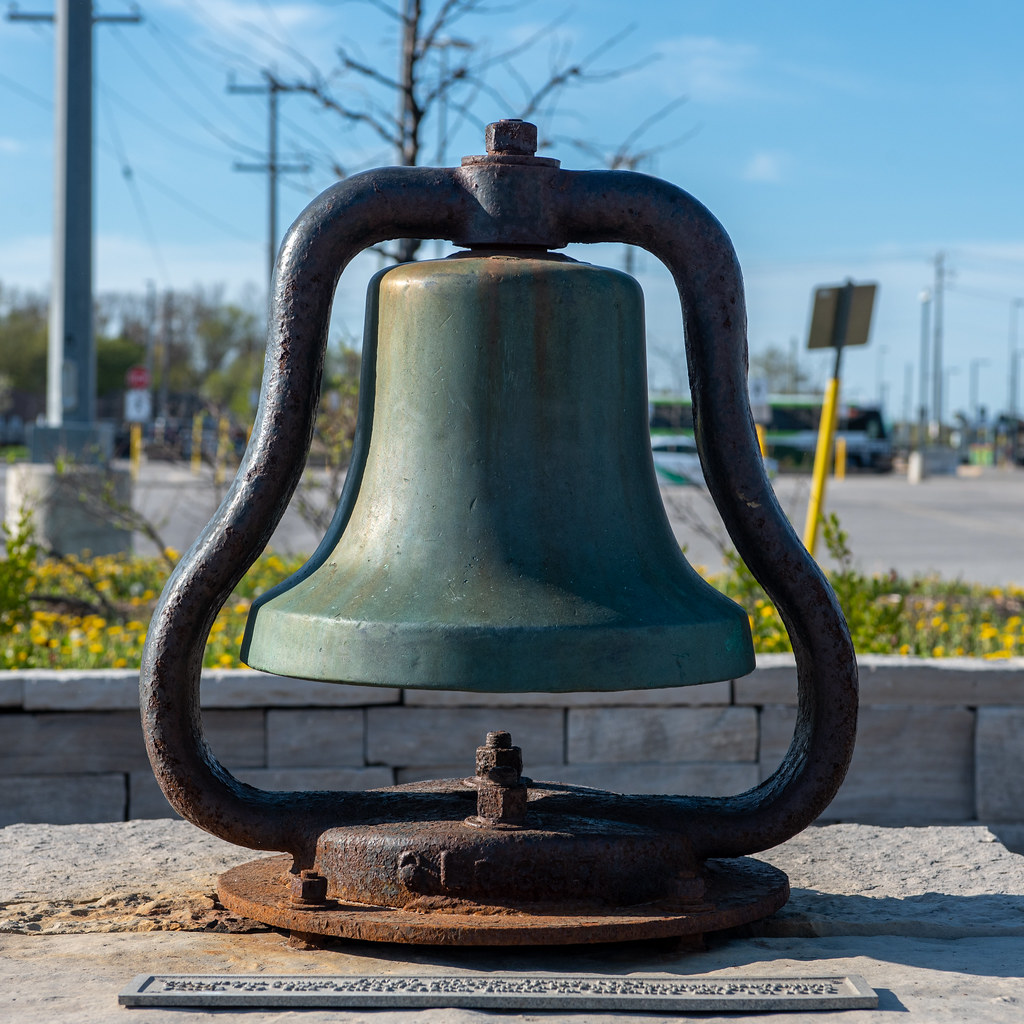
Nikon D750 – AF-S Nikkor 28-70mm 1:2.8D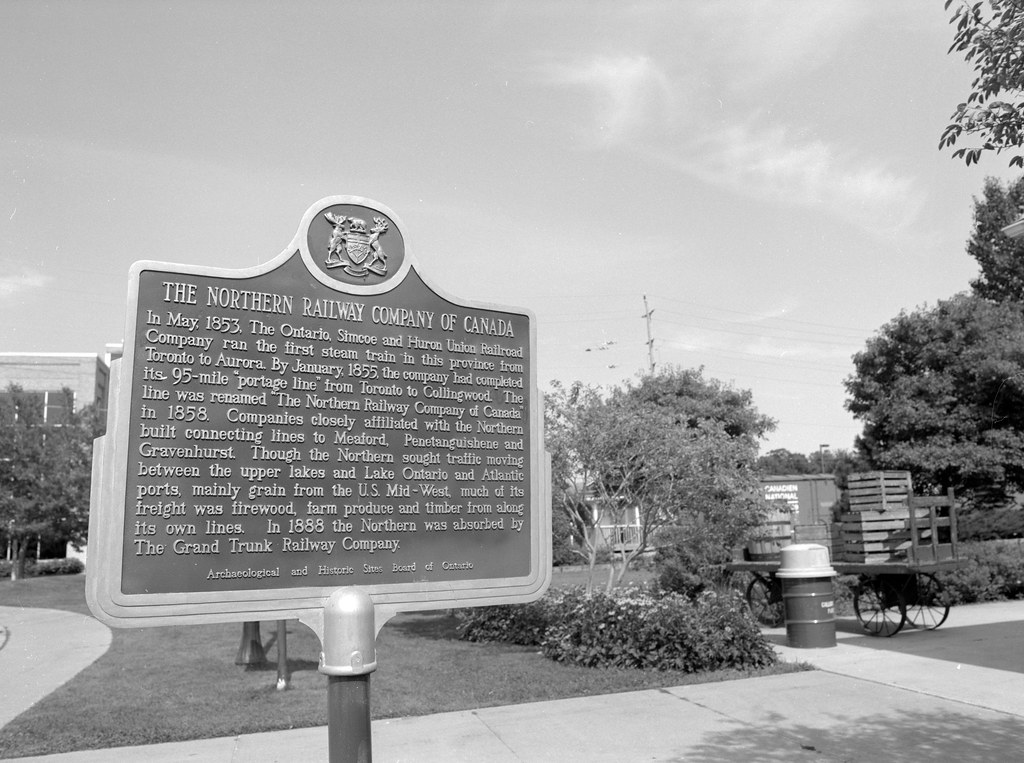
Mamiya m645 – Mamiya-Sekor C 45mm 1:2.8 N – Ilford FP4+ @ ASA-100 – Kodak D-23 (Stock) 6:00 @ 20C
The passage of the Act by the colonial parliament allowed the Canadian Government to provide money towards the construction of railroads throughout the Province of Canada. The Act, however, contained some conditions for government funding. The mainline needed to be at least 120 kilometres, promise at least a 6% return on the bond and use the Provincial Gauge. The inclusion of the final stipulation ensured that it would be challenging to interface with American railroad operators who used Standard Gauge but allowed for easy command of any rail operator within the Province. In contrast, several small railroad operators sprung up early on. These including the London & Port Stanley, which proved too short for government funds and used standard gauge worked on a rail line from Port Stanley to London mainly to run freight including timber and coal from Ohio. The Great Western Railway, backed by Sir Allan Napier MacNab, the Buchannan family, and Samuel Zimmerman, planned a line from Windsor to Niagara Falls, with the main facilities being located in Hamilton, Ontario. The other major operator, the Toronto, Simcoe & Huron Railway, planned to build a line from Toronto to Georgian Bay under Frank Capreol. Capreol initially wanted to raise funds using a lottery system, but the City of Toronto disallowed this method. Capreol was forced to bring onboard Charles Berczy and rechartered as the Ontario, Simcoe & Huron Joint Railway and used traditional investment methods for raising capital. By 1851 both Great Western and Ontario, Simcoe & Huron had started construction of their mainlines. Two days before the grand ceremony to kick off construction, Frank Capreol found himself sacked from the railway he conceived of, and the party went on without him. The grand ceremony was attended by Lady Mary Lambton, wife of the Governor-General and Sir Sandford Fleming, followed by a party at Toronto’s St. Lawerance Hall with entertainment provided by P.T. Barnham. Great Western, however, started with far little fanfare but with great annoyance to Brantford, who refused to pay bonuses and Great Western bypassed the community. It also helped that MacNab offered up a large amount of property for use as the main yard, station, and headquarters for his firm. Sir Allan would also be forced out of Great Western shortly before completion. In 1852 the third big player joined the fray, Grand Trunk Railway formed as a combination of several smaller firms who saw access to Government money as a way to join together to complete a line between Toronto and Montreal, but quickly expanded their reach through the inclusion of the Toronto & Guelph Railway and St. Lawerence & Atlantic Railway. Ontario, Simcoe & Huron faced difficulties in their first leg of the first wedge of the Oak Ridge Morain. At the same time, Grand Trunk had trouble constructing a bridge at Port Hope over the Garafraxa River. After being spurned by Great Western, Buffalo, Brantford, and Goderich chartered their line running from Fort Erie to Goderich as the Buffalo, Brantford & Goderich Railway.
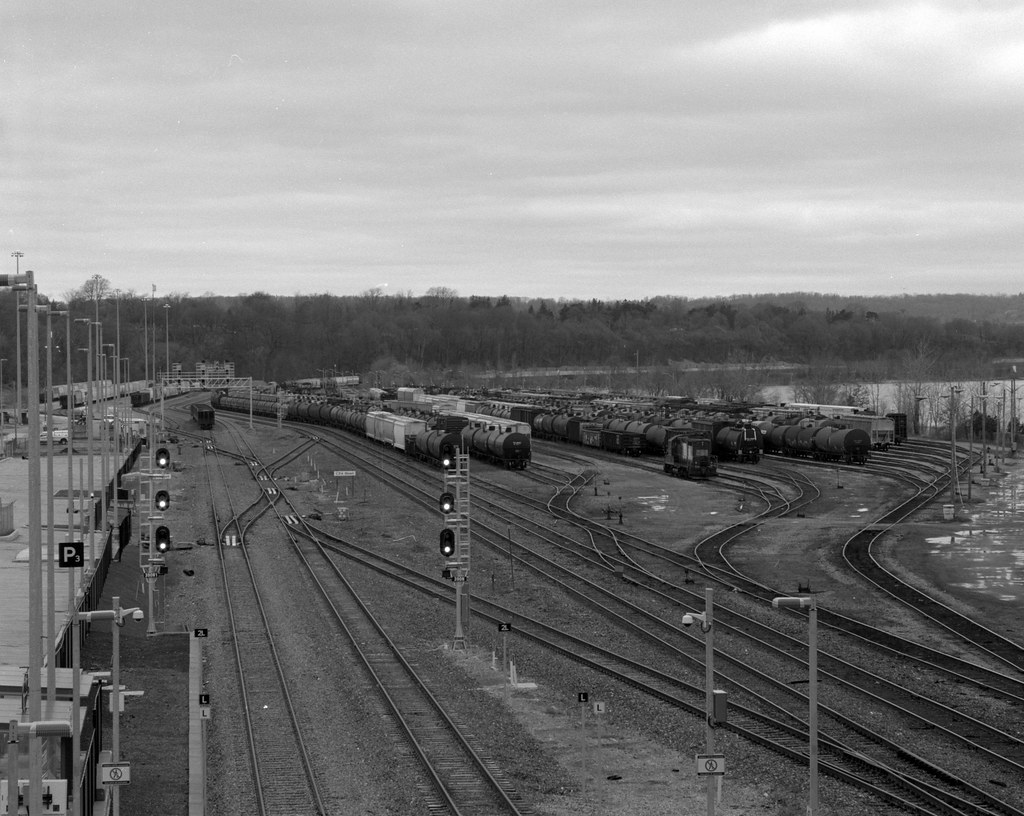
Mamiya m645 – Mamiya-Sekor C 150mm 1:3.5 N – Ilford FP4+ @ ASA-100 – Kodak D-23 (Stock) 6:00 @ 20C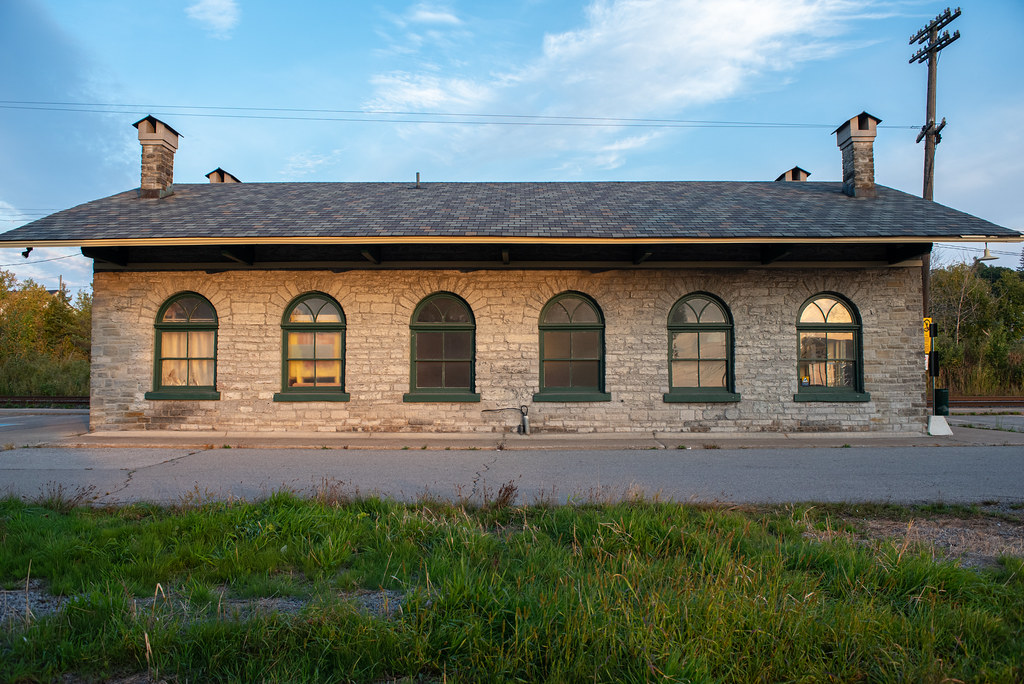
Nikon D750 – AF-S Nikkor 28-70mm 1:2.8D
Nikon D750 – AF Nikkor 28-105mm 1:3.5-4.5D
The race to complete the first steam railway was won in 1853. In May of that year, Ontario, Simcoe & Huron ran the first steam train from Toronto to Machell’s Corner, Aurora, Ontario. Driving the train, a locomotive named “Toronto” was completed the previous month by the Toronto Locomotive Works. It set Ontario, Simcoe & Huron apart using a Canadian built locomotive while the other two used British built locomotives. In the eastern part of Canada West, the Brockville & Ottawa Railway began construction from the docks at Brockville towards Pembroke, supporting the local timber industry that thrived along the Ottawa River. Grand Trunk cast Great Western as their main competitor and immediately planned to extend their holdings to extend their line from Guelph out to Port Edward (Sarnia, Ontario). In 1854, Great Western completed their mainline, and the celebrations shut down the city of Hamilton for a whole day. But at the same time, the board ousted Sir Allan from the company. In 1855, Ontario, Simcoe & Huron had reached Georgian Bay, helping kickstart the small town of Collingwood. Seeing a chance, Great Western absorbed the small Hamilton & Toronto Railway, completing a line between the two major cities in the province. The biggest triumph of the year for Great Western was constructing the Niagara Suspension bridge, making them the first to build a suspension bridge to carry a railway across. With all three rail operators now converging on Toronto, a stretch of land along Front Street fronting onto the large harbour that jutting into Lake Ontario began the focal point of all three, forming what would become known as the rail lands. Grand Trunk, along with London & Port Stanley, completed their lines in 1856. Grand Trunk and Buffalo, Brantford & Goderich both passed through Stratford within a month of each other. Although the effort was digging deep into the cash reserves of Buffalo, Brantford & Goderich, and by 1857 new investment renamed the operator to Buffalo & Lake Huron Railway. The speed of construction would come back to haunt Great Western when a Hamilton bound train out of Toronto broke through the bridge over the Desjardins Canal, killing sixty, among them Samuel Zimmerman and the son of Hamilton’s Mayor. By 1858 rather than fight over a small amount of real estate, Grand Trunk opened the New Station, which all three major players used, the city’s first “Union” Station. While far from grand, the small three-building complex would form the prototype of stations to come. Buffalo & Lake Huron would reach Goderich but at a tremendous financial cost. Ontario, Simcoe & Huron, long unprofitable, brought onboard Fredrick Cumberland, who recharted the line to Canada’s Northern Railway. Under Cumberland, any train that could not pay for itself got cut, and the savings helped build a branch line from Allandale into Barrie’s downtown. By decade’s end, Brockville & Ottawa arrived in Perth and branch from Smith Falls to Ottawa completed, and Grand Trunk had reached their western terminus at Port Edward.

Mamiya m645 – Mamiya-Sekor C 150mm 1:3.5 N – Ilford FP4+ @ ASA-100 – Kodak D-23 (Stock) 6:00 @ 20C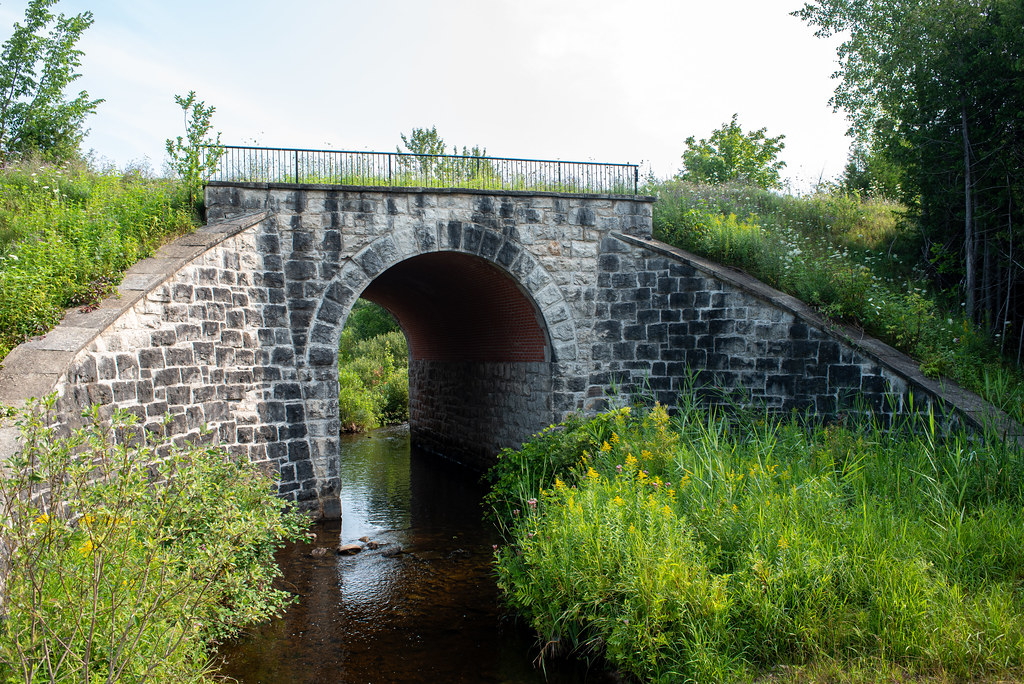
Nikon D750 – AF-S Nikkor 28-70mm 1:2.8D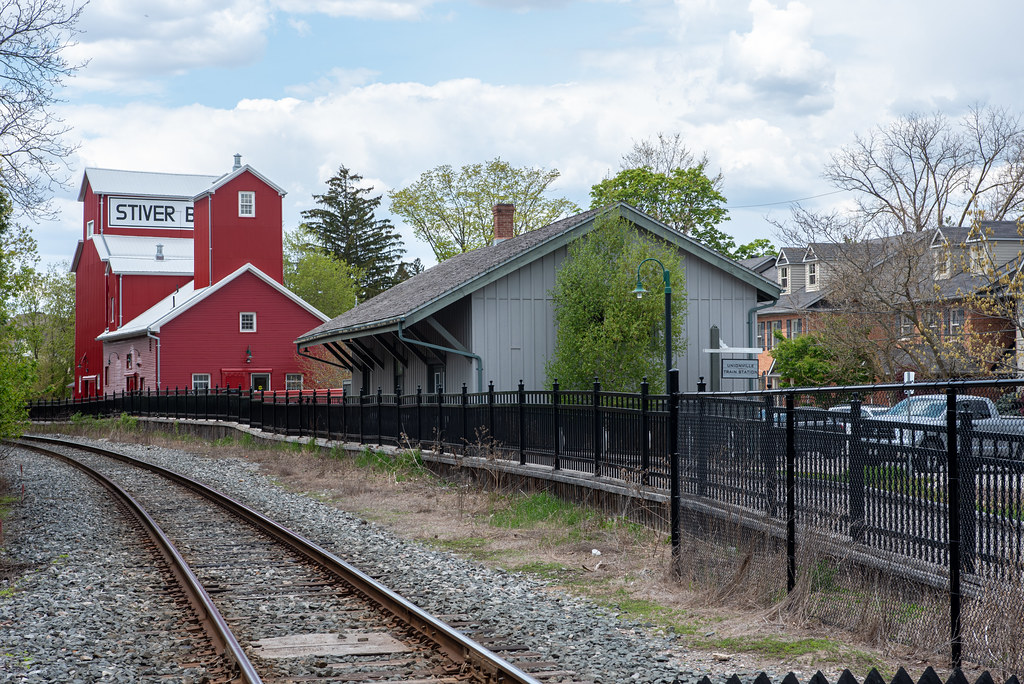
Nikon D750 – AF-S Nikkor 28-70mm 1:2.8D
The Desjardins canal accident made all the railway operators see the dangers of using iron rails and began slowly converting their networks from iron to steel, kicking off the domestic steel industry. Great Western kept production in-house, building their steel mill, the first in what would eventually become a primary economic driver in Hamilton for the next hundred years. Buffalo & Lake Huron, still in a financial slump, secured purchase by Grand Trunk, who began to take over operations starting in 1864, while still running trains and services under the original banner. The Wellington, Grey & Bruce Railway sought to construct a new line running from Toronto to Southhampton, an area of the province that had not been part of the initial construction boom. The north-western towns had been clamouring for some time, but Northern Railway ignored their cries, who refused to expand despite starting to turn a modest profit. As Provincial leaders gathered to discuss the unification of the separate provinces that made up British North America, one thing kept on coming up, a railroad across the continent. The negotiations would carry on against the backdrop of the American Civil War and the Fenian Raids. Still, by 1867 the Dominion of Canada was formed out of the Provinces of Canada (now divided into the separate provinces of Quebec & Ontario), Nova Scotia, and New Brunswick. Despite being late in the decade, it began to kick off a new wave of construction. In Toronto, the now decade-old station proved far too small as rail travel became popular quickly. Both Great Western and Northern Railway left the wooden station and constructed their own new Toronto stations. After facing trouble getting investment in Wellington, Grey & Bruce proceeded with a shorter mainline, choosing to run from Guelph to Southampton and use Great Western rails to make it into Toronto. Construction of their line kicked off from the community of Fergus and headed in both directions from there. Trying to bank on their promise, the Canadian Government turned to Grand Trunk, who by this point controlled some 2,000 kilometres of track to construct a transcontinental rail line with Federal backing, of course, but Grand Trunk turned them down flat. While most rail operators by this point we’re still running either Provincial or Standard Gauges, Scottish business owner George Laidlaw latched onto a third gauge, narrow gauge. In 1868 Laidlaw chartered a pair of narrow gauge railways, Toronto, Grey & Bruce, to run a line up from Toronto to Orangeville and Kincardine with a branch running to Owen Sound. The second, Toronto & Nippissing to run from Toronto to Lake Nippissing. Both would be in support of the Gooderham & Worts Distillery. Both would start within months of each other, but Toronto, Grey & Bruce received the most fanfare. A group of American investors looking to secure a standard gauge line across Ontario chartered the Erie & Niagara Extension Railway to construct a line from Fort Erie to Windsor. Spurred on by the formation of the Toronto, Grey & Bruce, Northern Railway began their expansion, with a line running towards Owen South from Collingwood and Orillia from Barrie. Brockville & Ottawa, despite falling short of their goal, began construction of a branch line under the name Canada Central Railway to construct a line from Renfrew to Mattawa to link up with a potential transcontinental line. Despite a strong start, Wellington, Grey & Bruce now faltered, and Great Western purchased majority control of the operator and began planning a branch line from Harriston to Kincardine. Erie & Niagara Extension would begin construction of their line under the new name of Canadian Southern Railway.

Nikon D750 + AF Nikkor 35mm 1:2D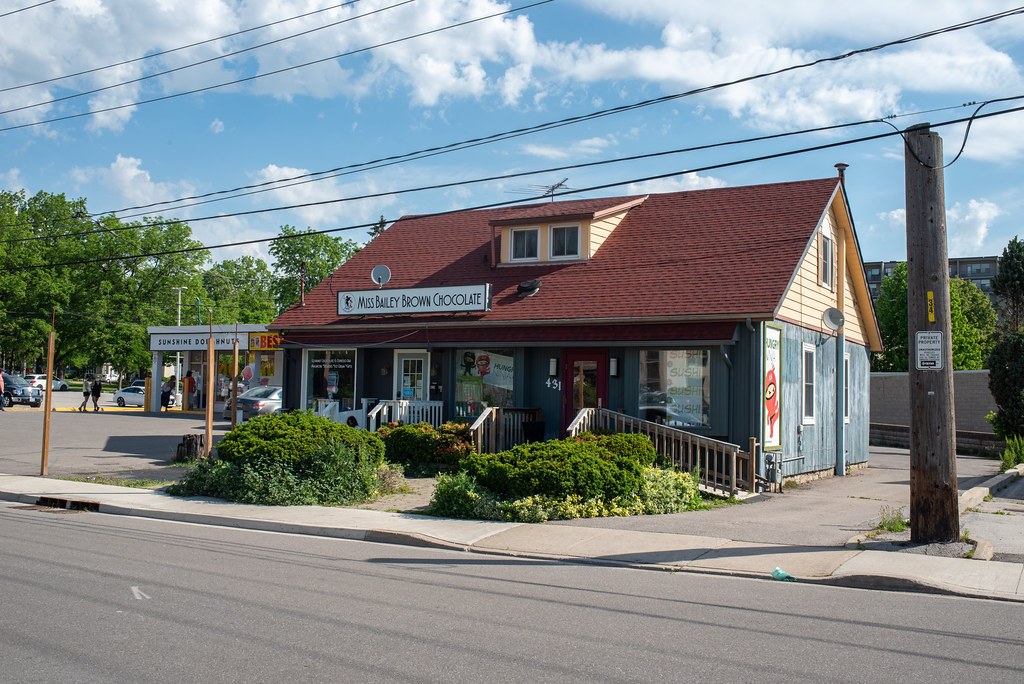
Nikon D750 – AF-S Nikkor 28-70mm 1:2.8D
Nikon D750 – AF-S Nikkor 28-70mm 1:2.8D
After less than a decade under the management of Grand Trunk, Buffalo & Lake Huron became wholly owned by Grand Trunk in 1870. With their major junction point between their two lines at Stratford, a major motive power shop started construction in the city. Also, to show their dominance, they hired architect Edward Seaton Scott to design a brand new Union Station for Toronto. Wellington, Grey & Bruce would start construction of their Kincardine branch line. In addition to building the line, they also established a maintenance yard at Palmerston and reached Guelph, Elora, and Alma in addition to building the line. Laidlaw’s lines would also reach goals, Toronto, Grey & Bruce hit Bolton, and Toronto & Nippissing arrived in Uxbridge. With these two moving along, Laidlaw began to plan a new line; the Credit Valley Railway was initially conceived as a narrow gauge auxiliary line from Toronto to Ontario. But quickly shifted to a standard gauge line from Toronto to Orangeville, and a Streetsville branched west heading towards St. Thomas. With help from a bonus, Canadian Southern selected St. Thomas as their headquarters proved the incentive to push Credit Valley westward. Another small operator, Ontario & Quebec, saw formation to build a line from Perth to Toronto but never left the paper. Although the biggest news of 1871 would be the promise by Canadian Prime Minister Sir John A. MacDonald that a transcontinental railway would be completed within a decade and entertained various contractors to complete the line. Among those seeking to build the line, one Alexander Galt, who had formed the Canadian Pacific Railroad Company and had many business interests in the western part of British North America. By 1873, Grand Trunk opened their new Motive Power Shops in Stratford. Their massive Second Empire styled Toronto Union Station, which quickly gathered back Great Western and Northern Railway. And a third triumph was the opening of the International Railway Bridge between Fort Erie and Buffalo. Toronto, Grey & Bruce arrived in Owen Sound that same year and extended out to Southampton and Kincardine, but the line terminated in Teeswater. The reason being that Wellington, Grey & Bruce had already reached Kincardine by 1874, but Toronto, Grey & Bruce blocked Northern Railway from reaching Owen Sound, forcing them to terminate at Meaford. The selection of the Canadian Pacific Railroad Company to construct the transcontinental line made several people guess, and a Liberal member of Parliament found out that the contract was awarded thanks to large donations to reelection campaigns by many Conservative members. The Pacific Scandal toppled the MacDonald Government and saw the election of a Liberal Parliament with newly minted Prime Minister Alexander MacKenzie promising to build the line with Government funds. True to his word, in 1875, the construction began starting at Fort William and heading west towards Winnipeg. By 1876, the Northern Railway had reached Gravenhurst but now had a new operator nipping at their heels; Hamilton & North-Western aimed to build a line from Hamilton to Collingwood. Financial troubles had them reaching Milton by this point but sought to continue north to Barrie and Collingwood running parallel to the Northern Railway line. Canadian Southern, having gone bankrupt, struggled along but found a new investor and began a part of the large Vanderbilt Railroad Empire who gladly continued operations in Canada. Credit Valley’s line from Parkdale at the Western end of Toronto opened to Milton in 1877. And a year later, Hamilton & North-Western reached Collingwood, exhausting what little reserve they had left. Credit Valley would open up many branch lines by 1879, with lines running to Brampton and Elora and even reaching Galt and quickly St. Thomas afterwards with great fanfare. Despite initially being competitors, Northern Railway and Hamilton & North-Western merged convenience and capital, forming North & North-Western Railway and continued to drive further north to reach Bonfield and the Pacific line.

Nikon D750 – AF-S Nikkor 28-70mm 1:2.8D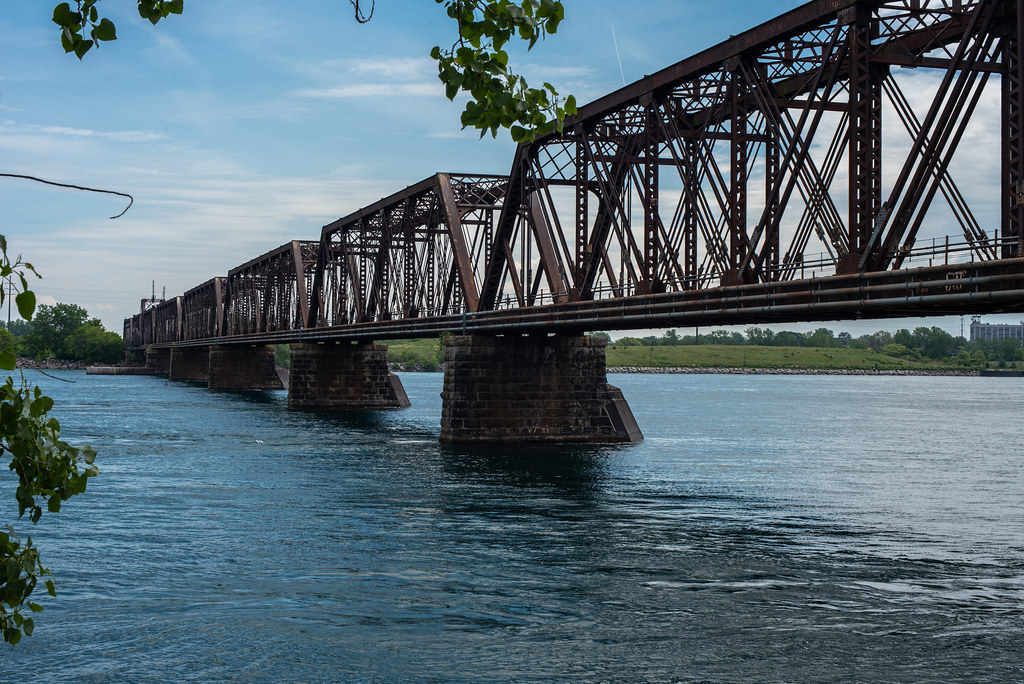
Nikon D750 – AF Nikkor 50mm 1:1.4D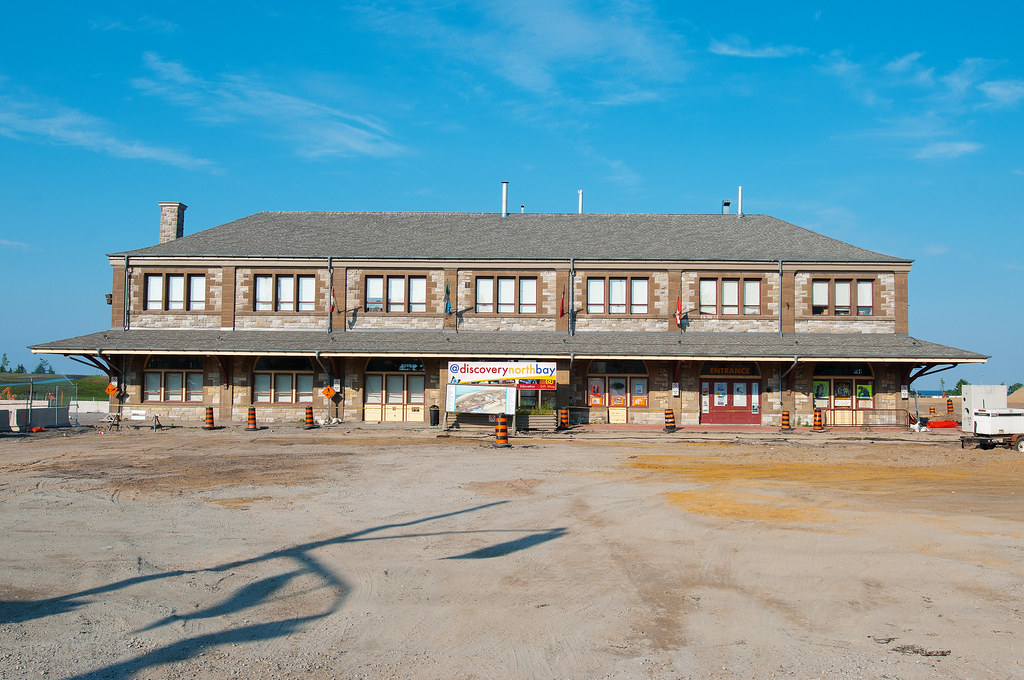
Nikon D300 – AF-S Nikkor 14-24mm 1:2.8G
By the decade’s end, Toronto had become a hotbed of railway competition. The rail lands were filled with kilometres of tracks, and roundhouses dotted the landscape as Grand Trunk operated a massive maintenance yard, as did Great Western and even Credit Valley. The rail corridor competition proved fierce as the big three and even smaller operators jockeyed for priority routing. In some cases, the contest grew violent as track operators moved to barricade and slowed down competitor trains running, sharing their tracks. They gave priority to their trains or ones which they had sharing agreements. Toronto’s problem would become Ottawa’s problem as the railroad proved a political matter in the first decade of Confederation. Eventually, legislation passed to ensure that a peaceful sharing of limited space was made. In Ottawa, the Conservatives under Sir John A. MacDonald returned to power after the four years MacKenzie Liberal government. This time MacDonald took a far more aggressive stance moving quickly to complete the pacific line, which would dominate the next big railway boom for Ontario and Canada.